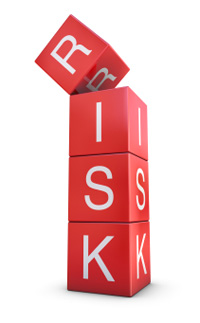Parenthetical Documentation

Source: “Research,” Tombie, istockphotos
Now that you know what to cite in your research paper, let’s look at how and when to do that documentation. The good news is that MLA calls for parenthetical documentation (in-text citation) instead of footnotes or end notes that some other style guides require. Using in-text citations, you can give immediate source information with minimal interruption to the flow of your paper; in addition, those citations have the information needed to find the longer, complete entries about the sources on your works cited page. Note: The terms parenthetical documentation, in-text citation, parenthetical citation, and in-text documentation are interchangeable and all mean the same thing.
Basic guidelines for in-text citations using MLA
- There is never a comma or a “p.” between the author’s name and the page number, just a single space, for example, (Asimov 148).
- Parenthetical citations are usually placed at the end of a sentence, before the period. They may, however, be placed in the middle of a sentence to (1) immediately follow a quotation or (2) make clear that the idea for part of the sentence came from one source, but another part of the sentence originated with a different source.
- It is possible that dreams may express “profound aspects of personality” (Foulkes 184).
- According to some, dreams express “profound aspects of personality” (Foulkes 184), though others disagree.
- According to some, dreams express “profound aspects of personality” (Foulkes 184), though others call that idea “foolishness” (Ritter 18).
- Cite the author’s last name and the page number (Rolf 93).
- In the absence of an author, cite the title and the page number (The Essence of Dreams 142).
- If you are using more than one book by the same author, list the last name, comma, a shortened version of the title, and the page (Rolf, “Dream” 93).
- If you identify the author and title in the text, just list the page number.
- In his essay “Dreaming the Future,” Foulkes contends that comforting dreams are most important (102).
- When citing a Web source in-text, you are not likely to have page numbers. Include the first part of the entry, whether it is a person’s name or a title. That rule applies to all sources without page numbers, such as films and songs, for example (Smith) or (“Polar Happiness”). If, however, that information has been mentioned in the text of your writing, parenthetical documentation will not be needed.
- Put in quotation marks and cite if you use two or more of the source’s words in a row, or even a single word or label that is distinctive or noteworthy.
- Historian Peter Reynolds has found late Renaissance writings in which Machiavelli contends that human beings are by nature “ungrateful” and “mutable” (74), and Montaigne thinks them “miserable and puny” (83).
- If you include in your paper an idea or fact from a source and put it in your own words, you are paraphrasing. When paraphrasing a specific idea, the paraphrase must be followed by an in-text citation in the same way as a direct quotation. Not documenting a paraphrase is the most common cause of unintentional plagiarism.

Source: “Risk,” porcorex, istockphotos
- If, in a paraphrase, you refer to the same source page for several sentences in a row, you don’t need to cite the source until you refer to a different page or end a paragraph. (If you use any direct quotations, however, you must cite them right away.) Be very specific with signal phrases, or else the reader will assume the entire paragraph is cited and does not include your own words. Again, not documenting a paraphrase is the most common cause of unintentional plagiarism.
- If you summarize an entire work or the general idea of an entire work, you do not need to include a page number, but you DO need to include the author’s name (or work’s title, if there is no author named) in your text.
- According to John Foulkes, all dreams have meaning.
- The message of “Dreaming the Future” is that all dreams have meaning.
Punctuation for parenthetical documentation
- Generally place a parenthetical citation before any punctuation required by your sentence. Periods and commas always go inside quotation marks UNLESS there is parenthetical documentation, in which case periods and commas go after the documentation.
- She said, “Hurry up” (Thomas 14), before she ran through the door.
- The exception to this rule is a quotation ending in a question mark or exclamation point. Then use the appropriate punctuation inside the closing quotation mark, and follow the quotation with the documentation and a period.
- The doctor asked, “What is a human life worth?” (Lowe 391).
- End punctuation of block quotations comes before documentation.
- They entirely refused to have it in bed with them, or even in their room, and I had no more sense, so, I put it on the landing of the stairs, hoping it would be gone on the morrow. By chance, or else attracted by hearing his voice, it crept to Mr. Earnshaw’s door, and there he found it on quitting his chamber. Inquiries were made as to how it got there; I was obliged to confess, and in recompense for my cowardice and inhumanity was sent out of the house. (Bronte 78)
Examples of parenthetical documentation
Several examples adapted from Susan Pierce’s Web site follow. They show the correct information and formatting for MLA in-text citations from different kinds of sources. These are only a few of the many possible kinds of citations. For a complete list, consult the newest edition of the MLA Handbook for Writers of Research Papers. Note that each citation for a print or PDF source is shown two ways; also note that if the same information comes from a Web page (or other non-paginated) source, the citation is the same as that for a print or PDF source, but without the page number.

Source: “World of Books,” Viorika, istockphotos
PDF Files and Pagination
If the source is a PDF file, which requires Acrobat Reader to open, it will have page numbers and resemble the original page in a book, magazine, or journal. You will notice that in PDF files, there is often a difference between the page numbers Acrobat Reader assigns to the document and the page numbers that appear in the body of the original page. This is because the PDF file adds metadata (information about the information) and it expands the number of pages. To avoid confusion, cite the page number that appears in the body of the original page within the PDF file. This way, readers can find the page number whether they are looking at the information in a PDF file or the same information in print (or another paginated format). Of course, if no page number appears in the body of the original page, you should use the page number assigned by the PDF file.
One author: Cite one author by his/her last name.
Print or PDF source
- Friedman writes, “I feel about globalization a lot like I feel about the dawn” (37).
- A study indicated that globalization had the potential to be a new beginning (Friedman 37).
(author's name in text)
(author's name in parenthetical documentation)
Electronic source: Exactly the same as above, but without a page number
Two or three authors: Two or three authors are cited with all last names.
Print or PDF source
- Frank and Jones stressed that schools need all-day kindergarten (45).
- Even isolated economies welcome globalization (Turner, Allen, and Brown 166).
(author’s name in text)
(author’s name in parenthetical documentation)
Electronic source: Exactly the same as above, but without a page number
More than three authors: Give the first author’s last name followed by et al. (meaning “and others”).
Print or PDF source
- Turner et al. theorized that even isolated economies welcome globalization (166).
- Even isolated economies welcome globalization (Turner et al. 166).
(author’s name in text)
(author’s name in parenthetical documentation)
Electronic source: Exactly the same as above, but without a page number
Corporate author: Cite the name of the government agency, corporation, organization, or association that produced the work as the author. If the name is long, it is better to give the name in the text, not in parentheses.
Print or PDF source
- Acceptable: A study demonstrates that controlling automobile emissions will reduce global warming (United States Environmental Protection Agency 84).
- Better: A study prepared by the United States Environmental Protection Agency demonstrates that controlling automobile emissions will reduce global warming (84).
Electronic source: Exactly the same as above, but without a page number
No author (anonymous works): If no author is given, provide a short version of the title in quotation marks (for article or chapter titles) or in italics (for book titles).
Print or PDF source
- The study “Nuclear Weapons Testing” indicated that “environmental radioactivity from the testing of nuclear weapons diminished after the major nuclear powers declared a moratorium on atmospheric testing in 1963” (55).
- “Environmental radioactivity from the testing of nuclear weapons diminished after the major nuclear powers declared a moratorium on atmospheric testing in 1963” (“Nuclear” 55).
- The statistics in Vietnam War Statistics show that the United States government did not accurately report the number of North Vietnamese who were killed (147).
- Statistics from the Vietnam War show that the United States government did not accurately report the number of Vietnamese who were killed (Vietnam 147).
Article
Book
Electronic source: Exactly the same as the article and book examples above, but without a page number
Two or more works by the same author: If you have two or more works by the same author(s), cite the last name of the author(s) with an abbreviated title. For example, if you have two works by John Taylor and Mark Stevens, one of which is an article, “Using Exercise to Control Your Weight,” and the other a book, Ten Steps to a Slimmer You, give the entire title of the article or book in your text, but give an abbreviated title if you use parenthetical documentation.
Print or PDF source
- In “Using Exercise to Control Your Weight,” Taylor and Stevens state that although “people on diets alternate between gaining and losing weight” (10), there is no definitive evidence showing that diets help overweight adults.
- Ten Steps to a Slimmer You shows the benefits of exercising energetically at least one hour a day (Taylor and Stevens 38).
- Although “people on diets alternate between gaining and losing weight” (Taylor and Stevens, “Using Exercise” 10), there is no definitive evidence showing that diets help overweight adults.
- One of the most important steps in losing weight is to exercise energetically at least one hour every day (Taylor and Stevens, Ten Steps 38).
(author's name in text)
(author’s name in parenthetical documentation)
Electronic Source: Exactly the same as above, but without a page number
Indirect sources: When you use quotations or paraphrases in your paper, whenever possible you should quote from the original source rather than a secondary one. Sometimes, however, you may need to quote or paraphrase text from a work an author has quoted in his work, and you cannot obtain the original source. In that case, name the person the author is quoting in your text and use the word qtd. (abbreviation for quotation) in your parenthetical documentation.
Print or PDF Format
- For example, if you located an article by John Barker who discusses the works of the literary scholars Mark Jones and Peter Taylor, and you wanted to paraphrase what John Barker says about them, your in-text citation would be as follows:
The essays of the contemporary literary scholars Mark Jones and Peter Taylor show them to be post-Modernist critics (qtd. in Barker 54).
Electronic Source: Exactly the same as above, but without a page number
Check your knowledge of parenthetical documentation using the following sentences. Each sentence has at least one error in MLA citation format or usage. Use your notes to write your responses. When you’re finished, check your understanding.
- A major reason families succeeded in the 1950s was that “federal assistance programs were much more generous and widespread than they are today.” (Coontz, p. 62).
- According to Stephanie Coontz, in the 1950s ”federal assistance programs were much more generous and widespread than they are today” (Coontz 62).
- Stephanie Coontz argues that it was the generosity and availability of federal aid programs that made families seem so successful and reliable in the 1950s.
- Even politically conservative scholars admit that we “should not hide from students that Colombus and other European explorers were often brutal” (Cheney, 267.)
- Lynne Cheney is forced to admit that students should learn that even European explorers were “often brutal (Cheney 267).”
- Lynne Cheney concedes that students must be told the errors of our European past (p. 267).
Sample Responses:
Should end with “ . . . today’ (Coontz 62).” No period required after today; no “p” required; no comma required.
CloseSample Responses:
Should end with “ . . . today’ (62).” Author’s name is used earlier in the sentence, so the second author mention is incorrect.
CloseSample Responses:
Should end with “ . . . 1950s (62).” The page number was missing.
CloseSample Responses:
Should end with “ . . . brutal’ (Cheney 267).” The comma between Cheney and the page number is incorrect. Also the period should go outside of the parentheses.
CloseSample Responses:
Should end with “ . . . brutal’ (267).” Author’s name is used earlier in the sentence, so the second author mention is incorrect. Also the closing quotation mark should come at the end of the quotation, not after the citation.
CloseSample Responses:
Should end with “ . . . past (267).” Using “p.” before the page number is nonstandard.
Close